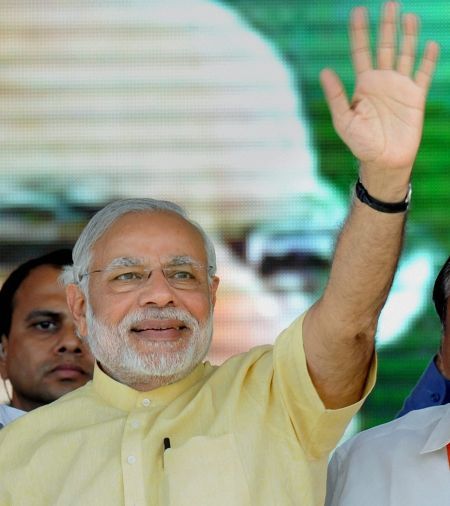 The ministries and departments, where bureaucrats are parked after being moved out of key positions, reflect the priorities of the government, observes A K Bhattacharya.
The ministries and departments, where bureaucrats are parked after being moved out of key positions, reflect the priorities of the government, observes A K Bhattacharya.
Twenty months after its rule at the Centre, does the Narendra Modi government look different in its engagement with the top echelons of the civil service? One obvious and noticeable change is the manner in which the prime minister himself has been holding consultations with senior civil servants. Not only through periodic meetings in small and large groups of secretaries in central ministries, Modi has also been in touch with them on policy as well as administrative issues. Union ministers may not always like this, but a secretary to a central ministry today has got greater access to the prime minister.
The second change is that unlike the Manmohan Singh government, it has made no pretence or promise of reforming the bureaucracy. Soon after the government of the United Progressive Alliance was formed in 2004 with Manmohan Singh as prime minister, expectations had arisen of a new appraisal system giving more weight to merit and a growth path for bureaucrats based on their domain expertise. After 10 years of the UPA regime, however, no such path-breaking change was introduced for top civil servants.
The Narendra Modi government, in contrast, began without raising any expectation of civil services reform. Ironically, however, this turned out to be an advantage in retrospect, as Modi did not have to carry the burden of living up to expectations of any kind. If anything, the civil servants were kept on tenterhooks as to what they were expected to deliver and how their performance would be judged. Ten long years of the UPA rule had naturally given rise to a situation where some bureaucrats were seen to be close to that regime, making them a little uncomfortable and unsure of their future role and assignments.
Eventually, however, what determined the bureaucrats’ place and clout in the new government was not the proximity they enjoyed with the UPA, but their ability to be as proactive as the Modi regime wanted them to be on schemes and policies dear to it. Thus, irrespective of what role they had played in the UPA regime, an Amitabh Kant or an Anil Swarup continued to play an even more important role after the formation of the Modi government. At the same time, new teams were being put in place in key ministries such as those for finance and home.
Within weeks of the formation of the Modi government at the end of May 2014, Rajiv Takru, revenue secretary, was shifted to the department of north-east. Shaktikanta Das, secretary in charge of the fertiliser ministry, was brought in to succeed Takru. But soon after the first Budget was presented, more changes took place. Arvind Mayaram was initially proposed to be shifted from the key position of finance secretary to the tourism ministry, but later sent to the minority affairs ministry.
Rajiv Mehrishi was brought in from Rajasthan to be the finance secretary and Hasmukh Adhia was selected from Gujarat to take charge of the financial services department as its secretary, replacing G S Sandhu, who was made chairman of the National Authority for Chemical Weapons Convention.
At the other end of North Block, the headquarters of the home ministry, Anil Goswami had to quit as home secretary. His successor, L C Goyal, too, did not last long and was moved to the Indian Trade Promotion Organisation as its chief executive. Mehrishi, who superannuated as finance secretary, was given a two-year term as home secretary.
The manner in which these changes were made would suggest that there is not much of a difference between the governments led by Modi and Singh as far as shifting or transferring top civil servants is concerned. Indeed, the UPA government, too, would reshuffle its key secretaries in a similar fashion. What makes it interesting is the new ministries or organisations that have become the Modi government’s favoured parking place for officers who are moved out of key positions.
For instance, the minority affairs ministry has become a favourite ministry where such officials are parked. Not just Mayaram, but even Rakesh Garg, who had to be shifted out of the telecom department, has been sent to this ministry.
Earlier, Takru was considered good only for the department of north-east. It is difficult not to conclude that the choice of these departments also reflects the government’s priorities. If somebody is not found good for the finance ministry or the department of telecommunications, what could be the argument to justify their transfer to the minority affairs ministry? Is it reduced work load, as some would argue, or reduced priority from the government’s governance perspective?











